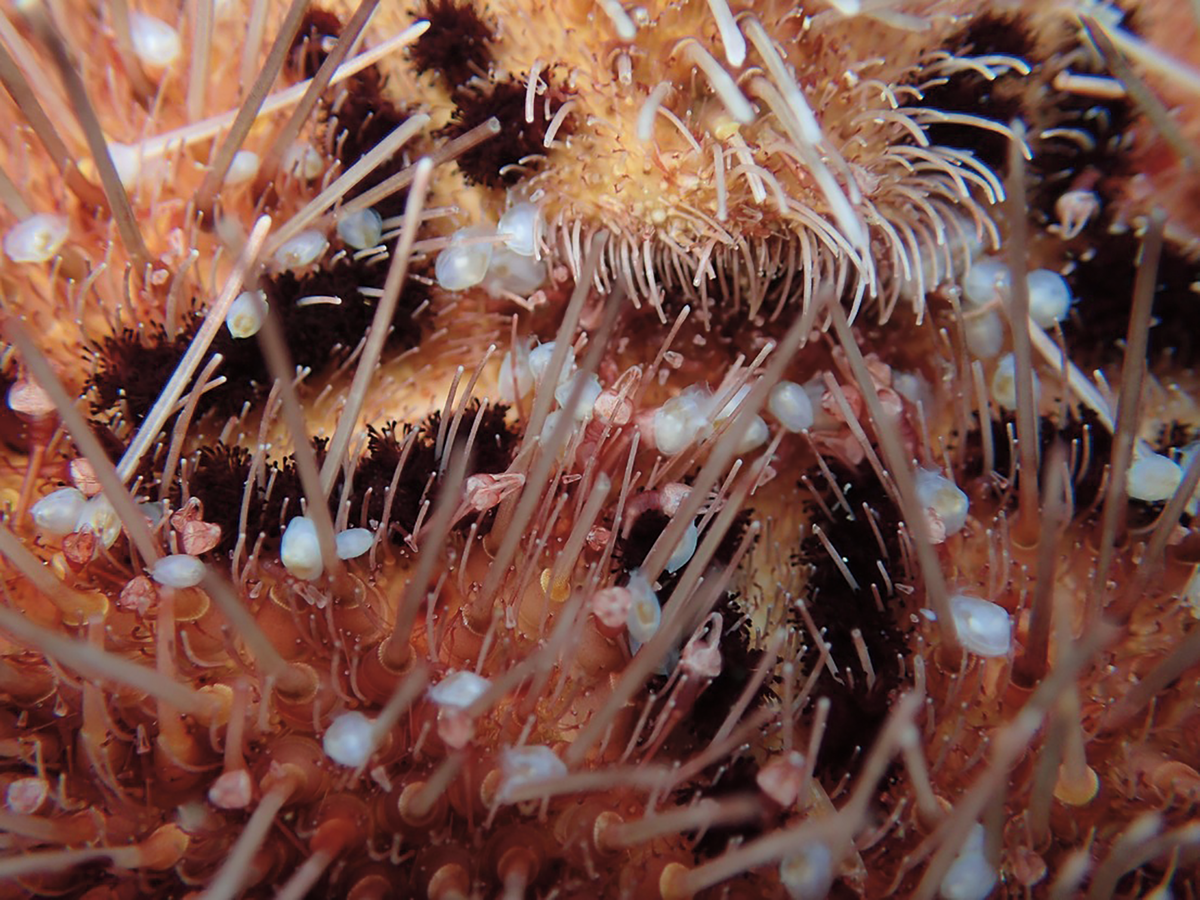Local researcher discovers new species in western South Africa while studying bivalves

SANTA BARBARA, Calif. – A study of bivalves on the western coast of South Africa led by Paul Valentich-Scott of the Santa Barbara Museum of Natural History provided new insights into the lives of the region's unique marine mollusks and discovered a new species along the way.
Valentich-Scott published the findings in ZooKeys, a peer-reviewed and open-access zoology journal, under the title Bivalves of superfamily Galeommatoidea (Mollusca, Bivalvia) from western South Africa, with observations on commensal relationships and habitats.
Among the four distinct species of bivalves researched and collected from the Western Cape region, for the first time, a new species was detailed by researchers.

Brachiomya ducentiunus is a small clam, less than an eighth of an inch in length, that spends its entire life crawling between the spines of sea urchins shared the Santa Barbara Museum of Natural History.
Co-author of the study and Emeritus Professor at the University of Cape Town, Charles L. Griffiths explained, "A large proportion of smaller marine invertebrates remain undescribed in western South Africa and almost any project that samples specialized habitats turns up many new records and species."
The image below shows small clams navigating the spiny environment on the surface of a sea urchin in tidepools near Cape Town, South Africa filmed during the study.

The study focused on the lifestyles of the diverse superfamily of bivalves that often have highly specialized symbiotic relationships with a variety of marine invertebrates explained a press release about the new research from the Santa Barbara Museum of Natural History.
"This study marks a significant advancement in our understanding of the biodiversity and ecological interactions of galeommatoidean bivalves," said Paul Valentich-Scott. "By uncovering the hidden lives of these small but ecologically important organisms, we hope to contribute to the broader knowledge of marine biodiversity and the conservation of these unique habitats."
The research team was comprised of experts from the Santa Barbara Museum of Natural History, the University of Cape Town, Sea Change Trust, Stellenbosch University, and the University of Colorado at Boulder.
"Creating foundational biodiversity knowledge is a most important step to the humbling realization of how fascinating and uniquely diverse a place is," shared co-author of the study, Jannes Landschoff, a marine biologist with the Sea Change Trust. "I see this every day through our work in the rich coastal waters of Cape Town where an extensive underwater kelp forest, the ‘Great African Seaforest’ grows."
Two other marine experts lent their help to get this fascinating study published and are also listed as co-authors, Dr. Jingchun Li and Dr. Ruiqi Li.
